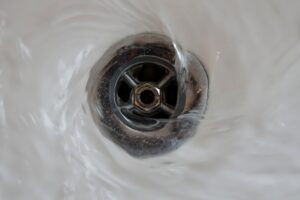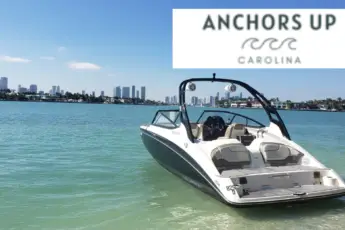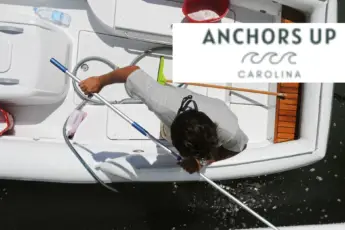Boats are well engineered machines designed to stay afloat in even some of the most extreme conditions. As a boat owner and captain, I have pushed watercraft to the limits by encountering inclement weather and rough seas. One of the reasons that boats remain buoyant is the ability to eliminate the accumulation of water above and below the deck. Scuppers are an integral part of the process. Here is how boat scuppers play an essential role in performance.
How Do Boat Scuppers Function
First, lets make it clear that scuppers are found on vessels of all sizes. I worked on yachts for many years and watched scuppers in action on the yachts and other nearby watercraft, including ships.
Out Flow
It is a well known fact that when ice accumulation, water pooling, or overloading occurs, it causes vessel instability. Vessel instability ultimately leads to capsizing when any of the above is extended beyond the allowable tolerance. In particular, we are talking about the accumulation of water on decks.
Boats are designed to keep water out which makes the deck and surrounding areas a gathering place. Rough seas and rain cause water levels to rise on decks. As a result of the design of the hull, the water remains within the gunnels hence the reason for scuppers.
Without scuppers, water would have no way of being removed except for manual labor such as bailing with a bucket. A scupper is designed to allow water to flow out back to the body of water while preventing water to return into the vessel. Notably, the water does not drain into the bilge as this would defeat the purpose. Water draining into the bilge would not alleviate preventing a stability issue and cause the bilge pump to run.
Due to the design, the scuppers are placed in low areas where most water accumulates. Additionally, slightly indented alleyways guide water directly into the scupper.
Take it from me; I have had massive amounts of water pour onto the deck and watched the water rapidly dissipate. The dissipation is a result of the scuppers serving their purpose.
Where Are Scuppers Located
As mentioned previously, scupper are primarily positioned at low points where water accumulates. At a minimum, the vast majority of vessels are equipped with two scuppers. One is positioned on the starboard side, while the other is on the port side near the stern. The stern positioning is particularly beneficial when the boat is on plane. As a result of the elevated bow, the water flows rapidly to the stern and out of the scuppers.
Differentiating from small watercraft, yachts and ships are fitted with many scuppers. For example, yachts drain water from the bow through scupper drains. The reason being is it prevents mass amounts of water from ever reaching the stern thus causing instability.
Back Flow
The thought of water flowing from the outside of the hull onto the deck via the scupper would seem counterintuitive, which it is. Fortunately, water does not flow from the outside of the boat to the inside of the boat through a scupper.
In most cases, scuppers are fitted with a rubber flapper or ball. As the water flows out, the flapper or ball pushes away from the pipe beneath the drain fitted into the deck. With that being said, the water flows only in one direction. The direction is always from the inside to the outside of the vessel.
To prevent backflow, the rubber flapper or ball blocks the opening in the outflow pipe when water is not running outward.
Common Problems With Scuppers
Like any component onboard a vessel, they are subject to failing poor performance due to lack of maintenance. Here are the most common problems with scuppers.
Blockage
The tops of scuppers are fitted with a grate to prevent large objects from entering the drain pipe. Large objects become difficult to remove and ultimately block water flow from the deck to the sea, river, lake, or other.
Undoubdabtly blockages are caused by more than just large objects. The drain surfaces easily become fouled by seaweed, dirt, trash, and more. Make it a common practice to inspect the drain before departing the dock. Clean away any debris accumulating on the drain grate.
As an angler I have been a victim of blocked aft scuppers as a result of the accumulation of sargassum weed. When the weed mats are thick in the coastal waters it requires constant clearing of the lures. Often, the weed lands on the deck as compared to water. The blockage was quickly recognized when seening water pool and the clog was removed.
Bad Check Valves
Never do you want water to flow from the outside of the boat to the inside of the boat through a scupper. In the event this situation is occuring take note and monitor the water levels on the deck. Remember, buoyancy is highly impacted by weight.
Bad check valves are a result of the rubber flap or ball no longer seating flush against the drain pipe. Water intrusion through scuppers requires maintenance and the repair should be made before venturing back out onto the water.
As far as the repair is concerned, scuppers are removable. Shop for a replacement scupper, remove the old, clean where the scupper and deck meet, apply new caulk and insert the new scupper.
Now You Know The Importance Of Boat Scuppers
Free standing water on decks leads to slips and falls and vessel instability. It is essential that all of the water returns back to the river, lake, ocean, or inland waterway. During this process, the water must bypass the bilge, or the situation further compounds itself. Additionally, ensure that the drain covers remain clear of debris at all times. Don’t underestimate the importance of boat scuppers.






